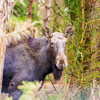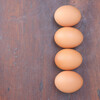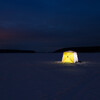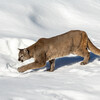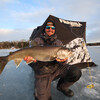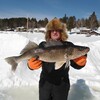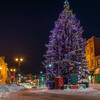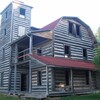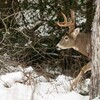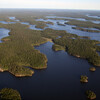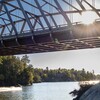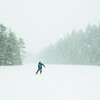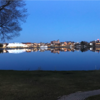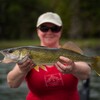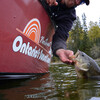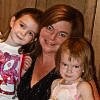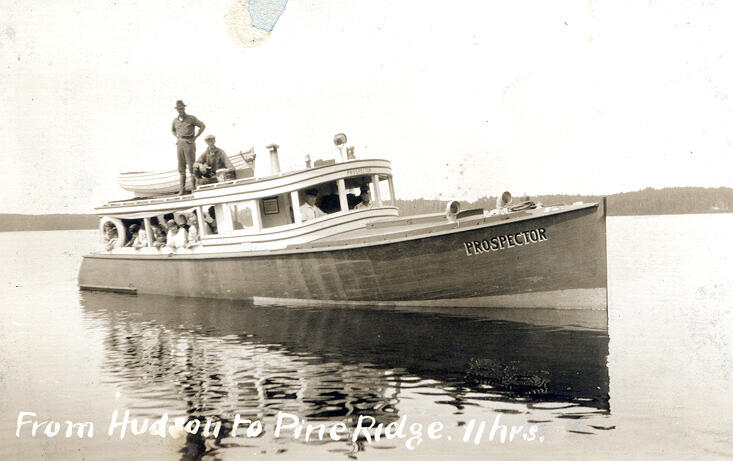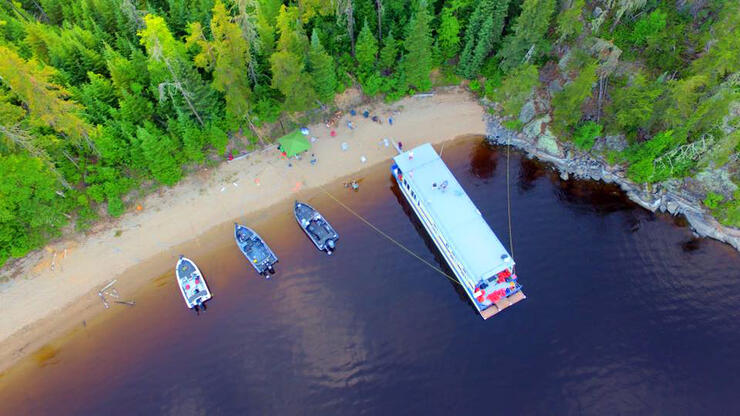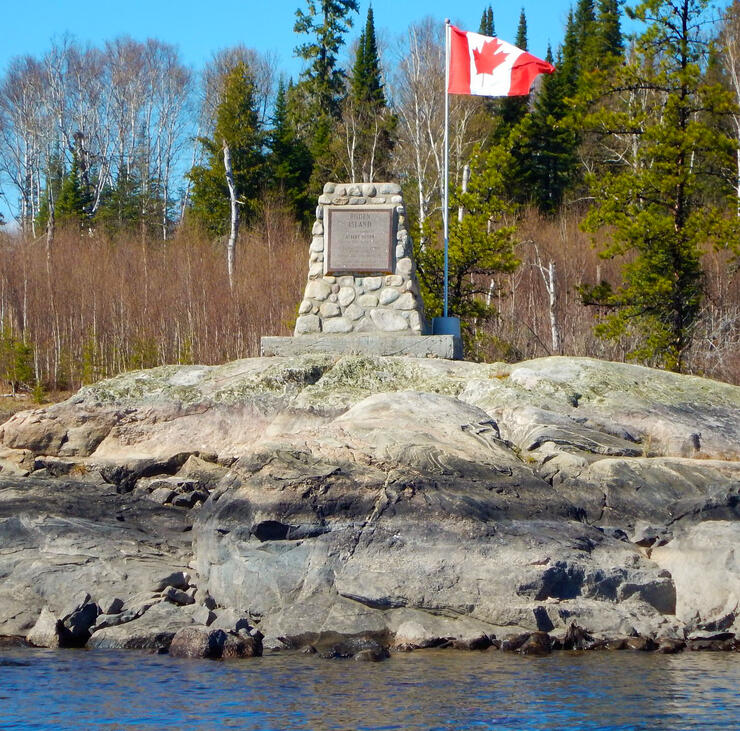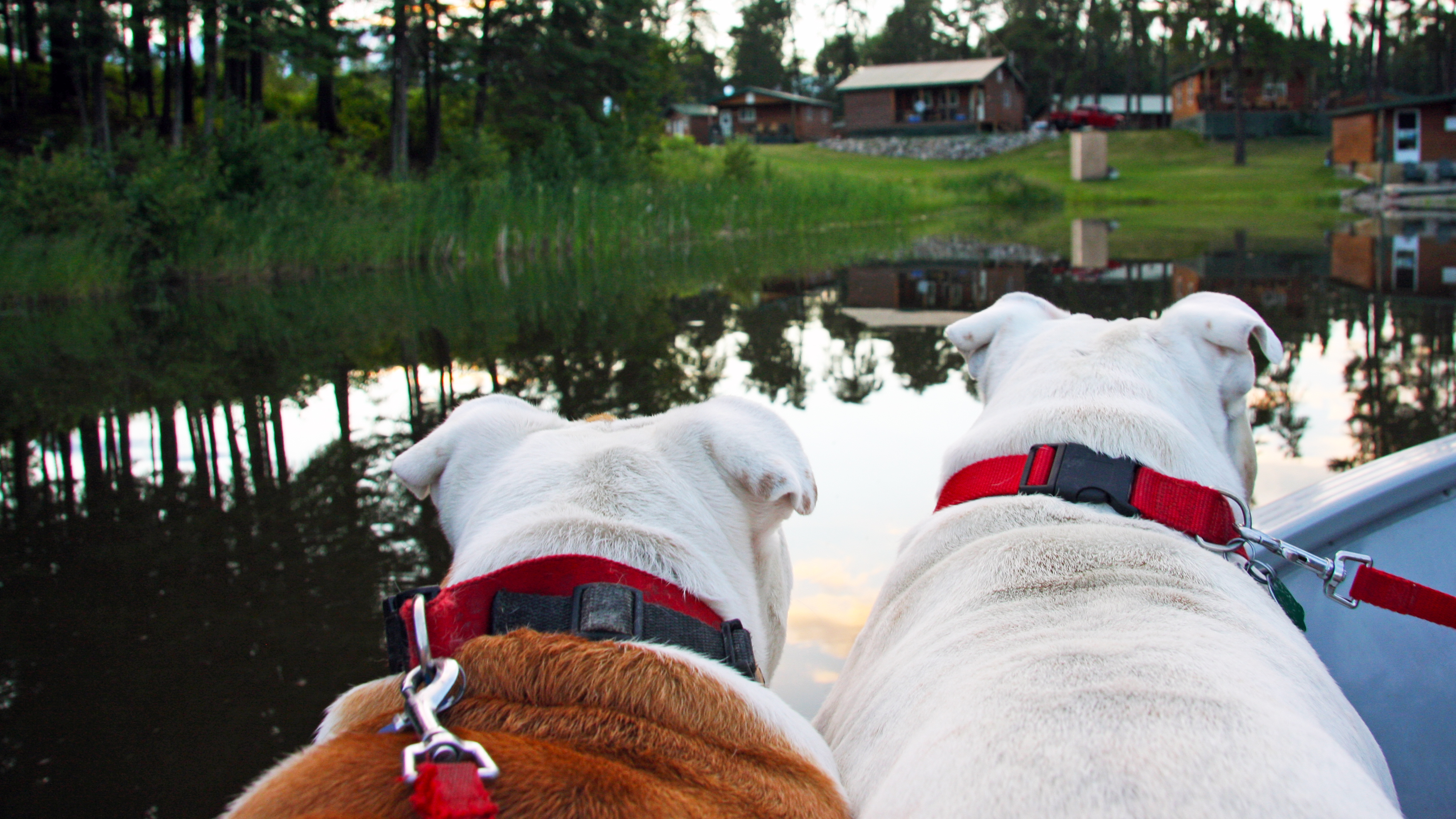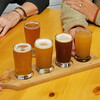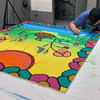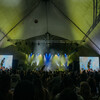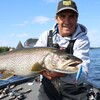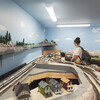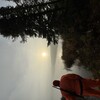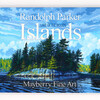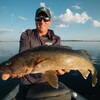10 Facts About Lac Seul
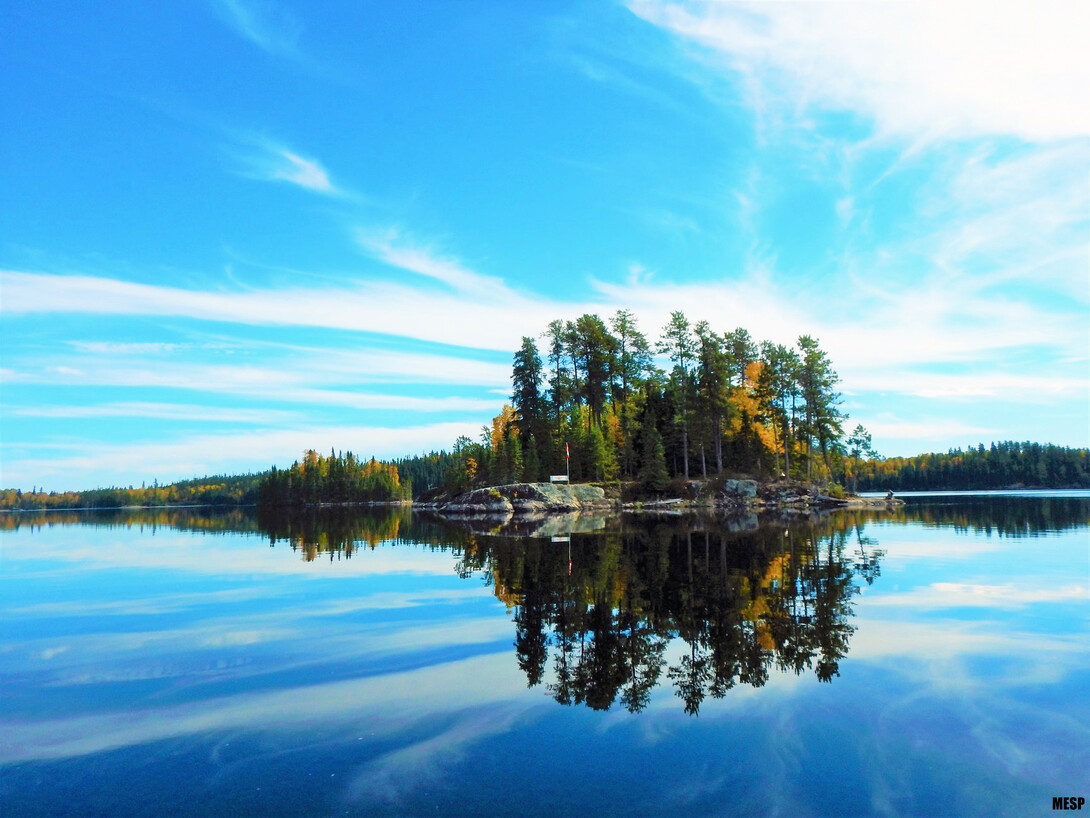
You've probably heard of Lac Seul. It's the massive crescent-shaped lake that spans from Ear Falls in the west to Sioux Lookout in the east and is part of the English River Watershed. Lac Seul drains westward via the Winnipeg River to Lake Winnipeg, and ultimately to Hudson Bay.
You also may have heard about its great walleye fishing, but do you know about all these other Lac Seul facts?
1 - Lac Seul Means “Lake Alone” in French
This lake is so massive that you indeed will feel alone if you venture into the center of the lake or in one of the many bays.
2 - Lac Seul is BIG
Lac Seul is approximately 150 miles wide, has 3,000 miles of shoreline, and covers over 560 square miles (358,400 acres). It is the seventh-largest lake in Ontario and the second-largest lake entirely within the province (second to Nipigon).
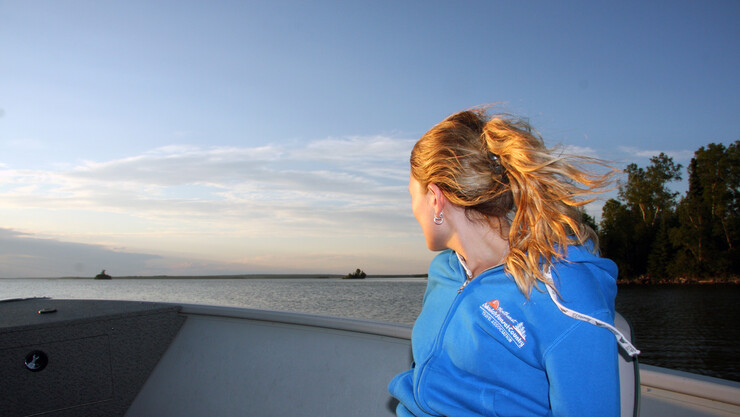
3 - Lac Seul wasn’t always that big
In 1928, Ontario Hydro built a dam at Lower Ear Falls, where Lac Seul flows into the English River, making it a reservoir. Over the next few years, water levels increased and then in 1935, increased again to present-day levels, which are about 10’ higher than the original levels.
As a result of the flooding, many First Nations communities were affected, and many lost their homes and gardens. Wild rice beds were flooded and destroyed. They were not consulted beforehand and were totally unprepared to lose their homes or livelihood. Ironically, even though Ontario Hydro put in the dam, the communities of Frenchman’s Head, Kejick Bay, and Whitefish Bay did not have power for decades afterward. As a result of the flooding, Kejick Bay became an island. The community remained isolated until 2009 when a 600m causeway was built. Eventually, in 2017, the Lac Seul First Nation received a settlement of $30,000,000.

4 - Lac Seul was once a major water highway
Around Christmas 1925, gold was discovered in large quantities, and the Red Lake Gold Rush began. The community of Hudson, Ontario, was a transportation hub as the railway went through it. Supplies were then loaded on steamboats, scows, and tugboats towards Red Lake.
In the early 1930s, Central Patricia Gold Mine and Pickle Crow Gold Mine were established 60 km north of Lake St Joseph. With the mining increasing in rugged Northwest Ontario, more efficient ways of transportation were required. The Patricia Transportation Company was incorporated in 1931 and set up its headquarters in Hudson.
The route was tiresome. Steamboats and tugboats left Hudson fully loaded and travelled through Lac Seul to Root Portage. From there, goods were unloaded and taken 3.5 miles overland to Lake St. Joseph, and then to Osnaburgh House and Doghole Bay (the most easterly point of Lake St. Joseph). Then the goods were taken north to Central Patricia and Pickle Crow mines. This was time-consuming, and a quicker and cheaper mode of transportation was required.
In 1936, a solution was found, and the long portage that explorers, fur traders, and trappers struggled with for centuries seemed less arduous. Scows were lifted onto flatbed railcars and moved across a marine railway. Scows weighing up to 15 tons could cross the Root Portage, as well as others, without being unloaded.
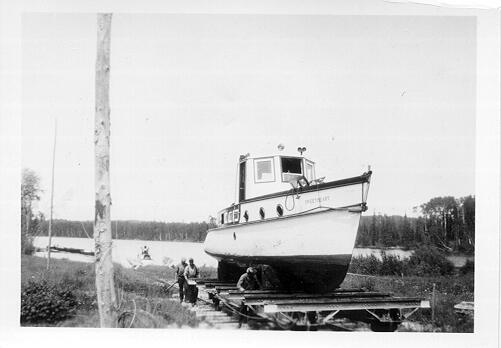
Remnants of the boats and scows of the gold rush can be found in Second Boat Bay. Read more about the scows and see photos of the remnants here. The Wapesi, built in the 1930s by Olie Gustafson, was operated by the Patricia Transportation Company. You can see where it lies now here.
5 - Lac Seul has its own fishing regulations
The Lac Seul Water System—including Broad, Sunlight, Root River, and Vaughn and Lost Lakes, as well as the Wenasaga River from the first rapids upstream from Lac Seul and approximately 3 km downstream to the last group of islands—has its own possession and slot size.
Walleye and Sauger Combined - You cannot keep any walleye between 18.1”-20.9” (46-53 cm) and one, not more than 20.9” (53 cm). S-4 and C-2.
Muskie - Whether you have a Sport or Conservation fishing license, you are not allowed to keep any muskie caught on Lac Seul. You cannot target muskies with a conservation license.
Northern Pike - Zone 4, which includes Lac Seul, has the following northern pike regulations. They are not specific to Lac Seul. You can’t keep pike between 27.6 and 35.4 inches (70-90cm). Only one greater than 35.4” (90cm). S-4 and C-2.
No person can possess any live fish taken by angling other than baitfish. If you are taking a fish to eat, you must kill it immediately.
Lac Seul is located in Fishery Management Zone 4. You should always check the Ontario fishing regulations for Lac Seul each year to see if the exceptions have changed.
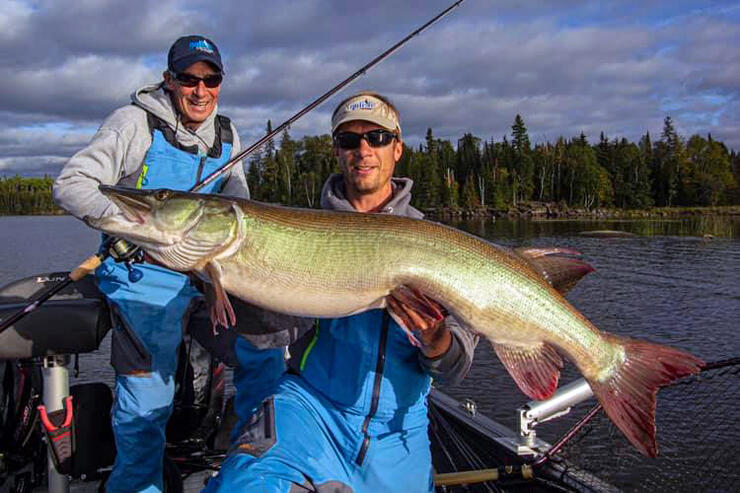
6 - The Fishing is incredible
Lac Seul is tea-stained, making it perfect for walleye fishing. Walleyes see well in lakes that are not clear, giving them an advantage over prey. Lac Seul has been referred to as the “Walleye Capital of the World.” Muskies caught on Lac Seul are huge! Muskies can be found in many places on Lac Seul, from weed beds to submerged logs, reefs, sand, and rocks. Depending on which part of the lake you are fishing, you can also find smallmouth bass, lake trout, northern pike, and whitefish. It's best to drive a smaller boat so that you can easily navigate through all the great fishing spots.
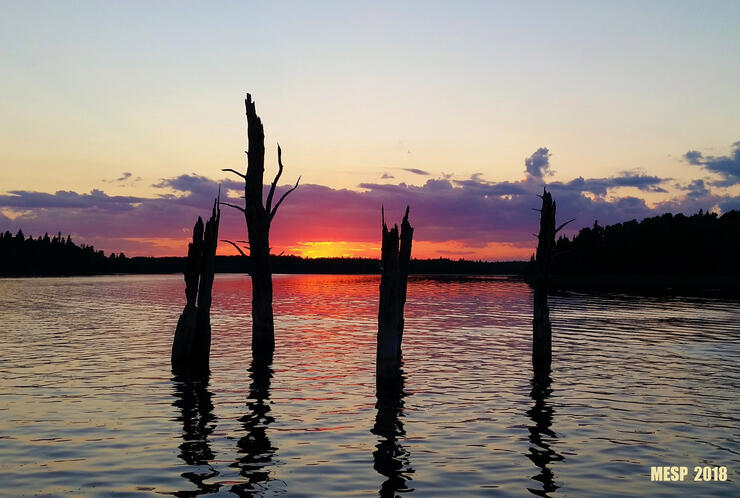
7 - NON-Residents cannot camp on Lac Seul
In 1985, Lac Seul was designated as a restricted camping zone. Therefore, non-residents of Canada are not permitted to camp on Crown land within half a kilometre from the shore of Lac Seul and in the Conservation Reserve.
You can still camp at a tourist outfitter with camping facilities. You can search 'Private Campground' under 'Type of Lodging' on Ontario's Sunset Country Lac Seul page or look for one on the map at the bottom of this page.
8 - You can rent a houseboat
There are two houseboat operators on Lac Seul. They will drive the houseboat out to the more remote parts of the lake. If you want to fish in the middle part of this crescent-shaped lake, renting a houseboat and staying in that area is a great choice. You won’t spend so many hours getting to your fishing hole each day. Rent a houseboat in Hudson near Sioux Lookout from Sioux Lookout Floating Lodges or Lac Seul Floating Lodges.
9 - Hudson’s Bay Co. established its first post in 1803
The Lac Seul area was first explored by James Sutherland in 1786 when he was sent from Gloucester House by the Hudson’s Bay Company. Four years later, he returned to Lac Seul to establish a post but decided against it. It was eventually established in 1803, but the HBC relinquished its control to the North West Company. Following the merger of the two companies in 1821, the HBC resumed trade in Lac Seul.
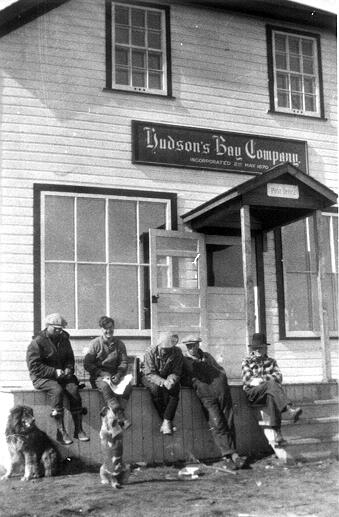
10 - Several Memorial Cairns are found on Lac Seul
As you are boating on Lac Seul, you’ll see several Memorial Cairns, which are mostly on the east end of the lake. The cairns are dedicated to members of the Legion Branch #139 from Hudson who fought and died in WWII.
The following memorial is for Albert Roden, who was employed with Patrica Transportation Co. for both winter and summer freighting. Albert died in the service and defense of his country while with the Royal Canadian Air Force over Ludwigshafen, Germany, on August 21, 1942.
Did you know all these facts about Lac Seul? Have you been to Lac Seul before? If not, I'd suggest you put it on your bucket list. It's a large, amazing, trophy-producing lake.
On the map below, you'll find some of the lodges, B&Bs, campgrounds, outposts, and houseboat operators on Lac Seul, as well as a few that are close by but have guests access to Lac Seul. You can also link to their websites here.
Recommended Articles

Is the 1,400 Kilometre Drive to Northwest Ontario For a Fishing Trip Worth it?
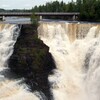
8 must-see waterfalls

6 Ways to Get Your 10,000 Steps This Fall

Top 5 Reasons You Should Be Fishing in Morson, Ontario

Discover The Winnipeg River

Enjoy Sunset Country's Fall Colours on Your Next Road Trip

Fishing in the Fall?

6 Reasons to Book a Fall Vacation to Sunset Country

10 Reasons to Avoid Ontario’s Sunset Country

Heading Across Canada?

A Guide to Sunset Country Museums
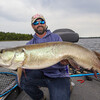
The Promised Land: Best Muskie Fishing in Ontario

Fall Fishing Tips
5 Essential Boreal Experiences in Ontario's Sunset Country

5 Obscure Facts About Northwestern Ontario: Were You Aware of These?
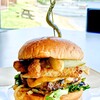
Great Food in Relatively Unknown Places
Outdoor Medicine

A Guide to Bringing Your Pets on Vacation to Canada

There's more than just fishing in the Red Lake Region

5 Amazing Sights You Can Only See By Boat

Going Fishing in Canada?

Going fishing in Ontario?

Outdoor Adventure in Ontario's Northern Paradise
Planning A Family Fishing Trip to Canada

Tips from a Fishing Legend

